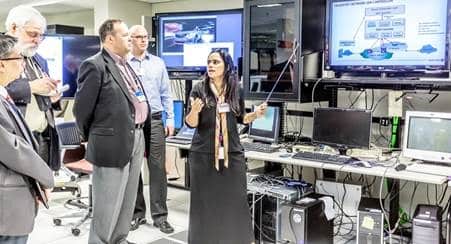Bell Labs research shows that communications service providers can dramatically reduce their operating costs by up to 40% by ‘virtualizing’ complex functions currently deployed on residential gateways into the network cloud.
The industrial research arm of Alcatel-Lucent, said that as home networks evolve to handle ever more levels of household data traffic, with cloud-based applications and increasing demand for access speeds of 100 Mbps or more, residential gateways have had to become very capable and, as a result, more complex. With this increased complexity, the potential for more support issues has arisen, and with it, an increase in the cost of providing support for service providers, especially home service callouts.
According to Bell Labs, a virtualized residential gateway (vRGW) addresses this issue by moving functions like IP routing and Network Address Translation (NAT) into the cloud, along with centralized management and control. This lets service providers introduce a more simplified, bridged gateway model making it easier for the user to successfully install, operate and maintain their home network, without having to make service calls or home visits.
Bell Labs estimates that a vRGW can reduce the costs of service fulfilment, assurance and lifecycle management, leading to the expected savings of up to 40%. In addition to reducing operating cost and improving customer experience, a virtualized gateway model allows new services to be introduced more rapidly and consistently across the installed base of residential gateway devices.
Sri Reddy, Vice President and General Manager, IP Routing & Software, Alcatel-Lucent
By leveraging network function virtualization we can move this complexity into the network which helps reduce costs for the service provider and complexity for the end user. And both will benefit from faster trouble shooting and rapid service activation.
Enrique Hernandez-Valencia, Consulting Director, Bell Labs, and one of the authors of the report
While the operating cost savings are essential to sustain profitable growth, having a well thought out VRGW architecture is a pre-requisite to enable service providers to seamlessly extend the home network into the Cloud.




















